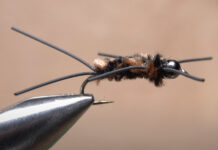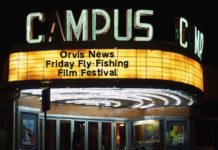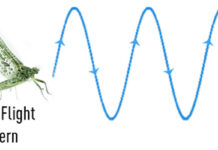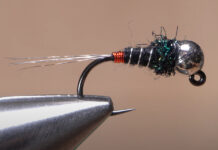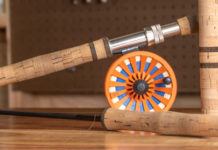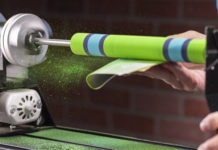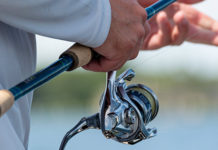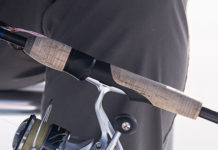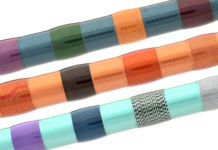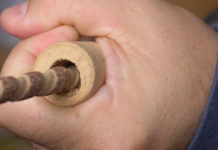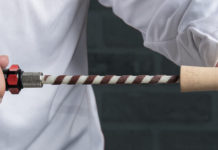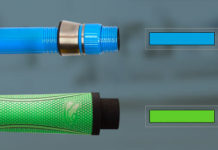Virginia’s saltwater anglers are an important economic engine for the coastal areas, contributing more than $700 million annually to the state’s economy.
Yet, they aren’t always viewed that way. After a summer of industrial ships relentlessly netting menhaden fish from the Chesapeake Bay, noisy spotter planes, repeated net spills on the Eastern Shore, contaminated beaches and deadly bycatch of prized Red Drum, it’s time to ask: When will Virginia wake up? Why is the state allowing a foreign-owned company to pillage menhaden, the most important fish in the sea, and wreak havoc on our pristine Bay shores?
Omega Protein, owned by Cooke Seafood of New Brunswick, Canada, acknowledged to the Virginia Marine Resources Commission (VMRC) in August they are now prioritizing fishing in the Bay in an effort to catch their annual Bay quota of 112 million pounds so that the quota doesn’t get cut in future years. Then there are the wasteful net spills, which occur about every summer, fouling the pristine beaches of the Eastern Shore. Does all of this sound like good stewardship of our Chesapeake Bay?
People are also reading…
In June, we launched a campaign to bring awareness to this problem and the damage it is causing to the Bay’s fragile ecosystem. We collected 11,000 signatures on a petition calling on Gov. Glenn Youngkin to move this industrial fishery out of the Bay until science can show it is not causing harm. Many citizens attended meetings of the VMRC to ask the commission members to conduct a public hearing on moving the fishery out, emphasizing that menhaden are a public resource and this massive fishery is inconsistent with the public trust doctrine. We also emphasized that these purse seine nets are too large to be fished safely in the shallow waters of the Bay where they often drag across the bottom and do untold damage.
Menhaden jumped from the water as Cockrells Creek fishermen began to raise a seine net on Sept. 3, 2019. A fleet spilled almost 5,000 menhaden on Silver Beach over the July 4 weekend and an estimated 10,000 on July 25.
After months of petitions, letters and calls for action, the administration finally proposed a 1-mile no-netting buffer along the Bay and Virginia Beach shores to reduce the likelihood of damaging net spills, which usually occur in shallow water. They also proposed additional fishing restrictions around holiday weekends during the summer tourist season.
This was a reasonable proposal with minimal impact to the industry, yet it was met with heavy resistance. But after a long meeting attended by a few hundred people, the VMRC voted this down 5-to-4 on Dec. 6, opting instead for a memorandum of understanding to have “further discussions.” Needless to say, Virginia’s saltwater anglers are not happy. Omega Protein again manages to escape with no new regulations and no accountability. This is a stunning display of poor governance.
Menhaden are inedible fish, reduced to fish meal and other byproducts and often exported for animal feed. This industrial “reduction fishery” has sparked controversy for decades and is outlawed by every other state on the East Coast. This one company gets to harvest 75% of the entire East Coast menhaden quota in Virginia waters, leaving less and less fish for predators that rely on them, most notably striped bass, but also other fish, mammals and sea birds. Menhaden are not considered “overfished,” but that is a coast-wide designation and has nothing to do with conditions in the Chesapeake Bay.
By allowing Omega Protein to catch a third of its total quota from the Bay versus the ocean (where operating costs are higher), Virginia in effect is subsidizing this fishery to the detriment of the Bay and local fishing economies. Is it a coincidence that the Eastern Shore, which was the epicenter of intense netting this summer, just experienced its worst recreational fishing season in recent memory? Local hotels, charter captains and bait shops are feeling the pain.
We applauded the administration for proposing to address net spills and other user conflicts, but the regulation proposal was defeated by some of the administration’s appointments to the VMRC board. Why would Virginia squander an opportunity to improve the Bay and coastal economy? Why should the Eastern Shore bear the burden of repeated net spills? Is the administration controlled by a lobbying firm or do they simply not care about our Bay?
For now, the assault on the Chesapeake Bay will continue until enough citizens stand up and government officials lead.
From the Archives: Mayo Island through the years

Mayo Bridge and Island

Aerial photos Richmond area, including Main Street Station, Interstate 95, Shockoe Bottom, Downtown, Mayo Island, Church hill

Birds fly over Mayo Island in the James River on February 13th, 2008

Mayo Island in the James River, from the Flood Wall on the south bank of the river.

In July 1940, a Richmond Colts batter headed to first base while a teammate scored in a victory over the Norfolk Tars in a Piedmont League game at Tate Field, which was on Mayo Island in Richmond.

4-27-1937: During the 1937 flood, the old ball park on Mayo Island looked like a lake.

This January 1931 image shows Tate Field, located on Mayo Island in the James River and used for several Richmond baseball teams from 1890 to 1941. The ballpark, named for 1880s local player Edward “Pop” Tate, had recurring problems with flooding, and a fire caused significant damage in 1941.

10-18-1942 (cutline): Flood waters from James River pour over old Mayo Island Baseball Park just off of Fourteenth Street Bridge. Picture taken from atop Richmond Boast Club building shows bleachers isolated by water.

John Jay Schwartz, on the 14th Street Bridge, is a Richmond broker who has Mayo Island as one of his listings. Part of Mayo Island is the wooded area behind him. Aug. 14, 2014.

A helicopter lowers a briefcase on Mayo Island Saturday, July 12, 1997, during the celebrations prior to the start of the Peace Frog Race. The briefcase contained destination check points for the race.

This historical photo of the baseball diamond that existed on Mayo Island in Richmond, VA, was made by Dementi Studio. (No date information for this photo was given.)

Sarah Dingle and Matt Dingle compete in the 2X14DR class of the Downriver Competition in the 1998 Open Canoe Downriver and Slalom National Championships Friday, June 19, 1998. They paddle through waterpipe rapid nearing Mayo Island.

Jen Watkins and Rob Scharges compete in the 2X14DR class of the Downriver Competition in the 1998 Open Canoe Downriver and Slalom National Championships Friday, June 19, 1998. They paddle through waterpipe rapid nearing Mayo Island.

Audience members sing along with songs at Carbon Leaf’s Endless Summer Luau and Campout on Mayo Island on 7/20/02. (Carbon Leaf on stage)

Backstage view of Carbon Leaf at Carbon Leaf’s Endless Summer Luau and Campout on Mayo Island on 7/20/02.

Donna Shell, with the National Environmental Trust, wore her global hat created by Ignatius Hats Saturday, April 19, 1998, for the Earth Day concert at Mayo Island. She was getting people to sign postcards to their senators to combat global warming.

Lisa Winnagle shakes a rattle to the beat of Baaba Seth’ music Saturday, April 19, 1998, at the Earth Day concert at Mayo Island.

Michelle Hand and Chris Hunter, both of Augusta, dance to the beat of Baaba Seth’ music Saturday, April 19, 1998, at the Earth Day concert at Mayo Island.

Large crowd gathers on Mayo Island to celebrate Earth Day.

Richmond fire officials have not determined the cause of the blaze at the paper warehouse, 508 S. 14th St. on Mayo’s Island. April 3, 1989.

Ahnna Rinaldi, 10 of Sandston, holds at red rat snake (also known as a corn snake) during the Fish Festival now incorporated into the Earth Day festivities on Mayo Island on April 19, 2008. In background is naturalist Ralph White.

Jayden Tatum, 4 of Baltimore, gets some help from his dad while learning to fish at the James River during the Fish Festival now incorporated into the Earth Day festivities on Mayo Island on April 19, 2008.

Watched by Orvis’ Dale Huggins, Quraan Randolph, 7 of Baltimore learns to fly cast during the Fish Festival now incorporated into the Earth Day festivities on Mayo Island on April 19, 2008.

James “Tony” Borst has lived on the small islands near the Mayo bridge and downtown Richmond on and off for the past 20 years. Here, Borst is seen on Devil’s Kitchen Island with a view of downtown Richmond in the background.

Joseph “J.D.” Osborne has lived on the islands in the James River near the Mayo bridge and downtown Richmond on and off for over 10 years. Here, Osborne, originally from Mecklenburg, Va., relaxes near his campsite on May 29, 2009.

With fly rod in hand, Dale Huggins discusses shad fishing strategy on the James River near Mayo Island. The Hickory shad, and to a lesser extent the American shad, have begun their annual run upstream to spawn.

Mayo Island

Young people listen to the music of Everlast at Mayo Island in Richmond Aug.14, 1999

Michael Tobin , men’ s XTERRA winner crosses the finish line at Mayo’s Island . July 18,1999
Credit: Source link


